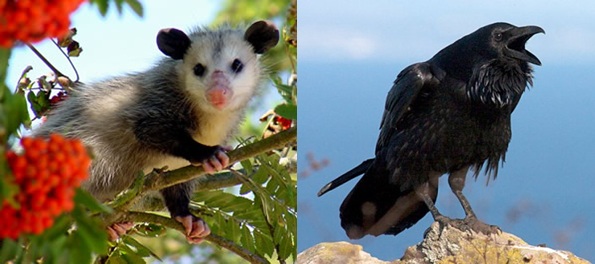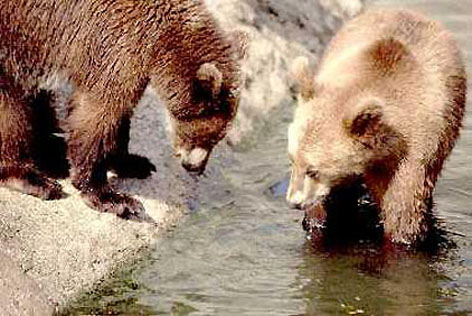| Animals World |
|
|
Omnivore
Many animals are either herbivores, who eat
only plant food, or carnivores, who eat only
the flesh of other animals. The preference for one
type of food or the other depends largely on the
type of digestive system that the animal has, and
the resources it can put into its “energy budget.”
Meat is generally easier to digest and requires a
less complex digestive system and a relatively
short intestinal tract. However, in order to get
meat, carnivores have to invest a lot of time hunting
their prey, and the outcome of a hunt is always
uncertain. The food of herbivores ismucheasier to
obtain, since plants do not move and all the herbivore
has to do is graze on the grasses, leaves, or algae
readily available around it. However, the cellulose
that plants are made of is very tough to
digest, and thus herbivores must have a much
more complex and lengthy digestive tract than
carnivores. Many herbivores are ruminants, with
multipart stomachs, who have to chew and digest
their food more than once in order to get adequate
nutrition from it.
Carnivores and herbivores are also vulnerable
to a loss of their food source. Herbivores whose digestive
systems are specialized to process only
one type of food will starve if that food becomes
scarce due to drought or some other climatic
change. Carnivores often have specialized hunting
patterns that cannot be changed if the prey
(usually herbivores) become scarce due to loss of
their own food source.
Omnivores maximize their ability to obtain
food by having digestive tracts capable of processing
both plant and animal food, although they are
usually not capable of digesting the very tough
plant material, such as grasses and leaves, that
many large herbivores eat. Omnivores may also
be scavengers, eating whatever carrion they may
come across. Omnivores often lack the specialized
food-gathering ability characteristic of pure carnivores
and herbivores. Many animals often
thought of as carnivores are actually omnivores,
eating both plants and animals.
|
Look also: Most Popular AnimalsPrincipal Terms
carnivore: a flesh-eating animal |
|
Copyright 2016 |
|



